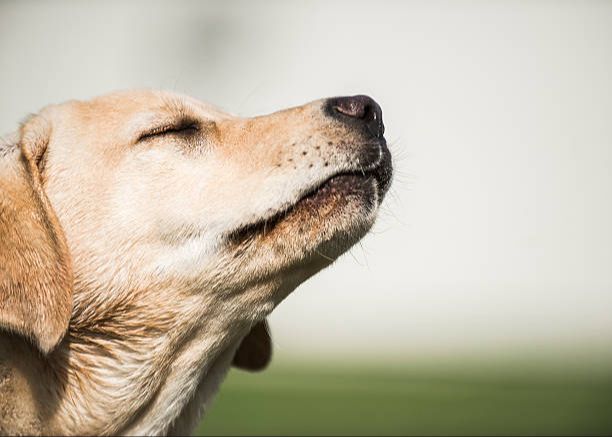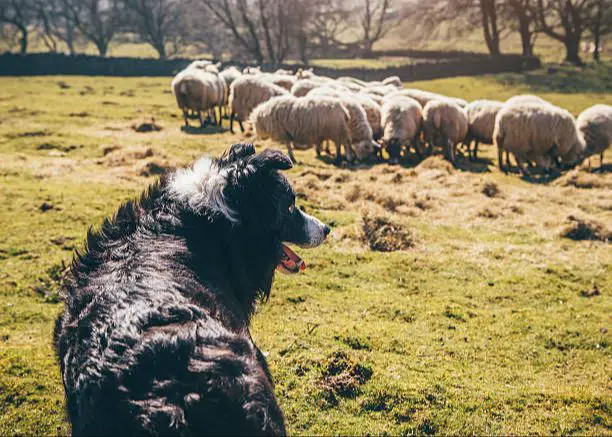Introduction
Dogs are one of the most popular pets and companion animals in many households around the world. Their ancestry can be traced back tens of thousands of years to their wolf ancestors. But what exactly is the species classification and taxonomic group of dogs? In this article, we will briefly explore the species classification and taxonomic hierarchy that dogs belong to.
Taxonomic Classification
Dogs belong to the kingdom Animalia, which encompasses all multicellular organisms that lack cell walls, obtain energy through consumption, and have specialized sense organs. Within Animalia, dogs fall under the phylum Chordata, which are animals that possess a notochord and dorsal hollow nerve cord at some point during their development.
More specifically, dogs belong to the class Mammalia in the phylum Chordata. Mammals are characterized by the presence of hair, three middle ear bones, and mammary glands in females that produce milk to nourish their young.
Dogs belong to the order Carnivora along with other meat-eating mammals like cats, bears, weasels, and hyenas. The distinguishing features of Carnivora include specialized teeth for shearing meat, a simple stomach, and a digestive tract suited for the consumption of animal prey.
Within Carnivora, dogs are part of the family Canidae which includes wolves, foxes, jackals, and coyotes. Canids share common anatomical traits like long muzzles, bushy tails, and upright ears.
Finally, dogs belong to the genus Canis which also includes wolves and other wild canids. The dog’s scientific name is Canis lupus familiaris, indicating their close genetic relationship to the gray wolf species Canis lupus. Although considered a subspecies of the gray wolf, dogs have evolved distinct traits and behaviors as a result of domestication by humans over thousands of years.
Domesticated Descendants of Wolves
Dogs are actually a subspecies of gray wolves. The relationship between wolves and dogs is quite close genetically, yet the behavioral differences are significant. Dogs were the first animal to be domesticated by humans, likely sometime around 15,000 years ago.
The prevailing theory is that early humans living in hunter-gatherer societies began taking in wolf puppies. The friendliest, least fearful pups were more likely to spend time around humans for food scraps. Over many generations, these protodogs became accustomed to human contact.
As humans transitioned to agrarian societies, they bred dogs for specific purposes like hunting, guarding, and herding. Humans intentionally bred dogs to display more amiable temperaments while retaining useful wolf-like traits. This selective breeding led to the development of distinct dog breeds over thousands of years.
While domesticated dogs differ from wolves in their dependence on and intimacy with humans, their DNA still reveals their shared ancestry. Molecular studies show domestic dogs originate from ancient wolves that likely lived in Europe or the Middle East around 19,000-32,000 years ago.
Physical Characteristics
Dogs possess several physical traits that identify them as members of the canine family. Some of their most distinguishing features include:
- Dental formula – Dogs have 42 teeth, with the dental formula: I 3/3, C 1/1, PM 4/4, M 2/3. This dental configuration is shared among canines.
- Skull structure – The dog’s skull is relatively long and possesses a long snout, an identifying feature of canines.
- Tails – Dogs have long, upward-curling tails, which aids them in communication.
- Coats – Dogs have double-layered coats consisting of a dense undercoat and tougher outer coat. This provides insulation and protection.
- Front feet – Dogs have four toes and front dewclaws on their front feet, typical of canines.
- Hind feet – Hind feet have four toes but no dewclaws, another canine trait.
- Shoulder structure – Dogs have loose skin around their necks and shoulders to protect them in fights.

In summary, the physical attributes of dogs including their skull shape, dentition, feet, coat, and tail align them taxonomically with other canid species. Their anatomy is adapted for running, hunting, and survival.
Behavior
Dogs are highly social animals that exhibit pack mentality and complex behaviors. As descendants of wolves, dogs have inherited many wolf-like traits while also developing distinct behavioral characteristics through the domestication process.

Most dogs have a strong pack mentality and social hierarchy. They often see their human families as their “pack” and may try to assert dominance by claiming territory, resources, or attention. Leadership roles in a dog pack are fluid. Dogs use play and other interactions to constantly test and negotiate ranking order. Proper socialization and training is important for curbing unwanted dominance behaviors.
Scent marking is an important territorial behavior for dogs. They use urine and feces to establish boundaries and leave messages for other dogs. Leg lifting and ground scratching are common visual territory markings. Intact males are more likely to urine mark than neutered dogs.
Dogs communicate in complex ways using body language, barks, growls, whines, and tail positions. Subtle posture shifts convey different moods and intentions. Dogs are very expressive with their body language if humans learn to recognize the signals.
Many dogs retain strong instinctual drives from wolves, including hunting behaviors like stalking, chasing, and biting. Prey drive is more pronounced in certain breeds. Proper training and outlets for natural behaviors are key to preventing problematic impulses.
While dogs share common traits, there is immense variety in behaviors across breeds. Herding dogs exhibit focused stare and nipping behaviors. Hounds are driven to follow scents. Guard dogs are protective and territorial. Terriers are feisty and energetic. Understanding breed tendencies provides insight on a dog’s actions.
Senses
Dogs have a remarkably acute set of senses that allow them to expertly understand and navigate their environment. Their sense of smell, in particular, is far superior to that of humans. The average dog has over 220 million olfactory receptors in their nose, compared to only 5 million in humans. This means dogs can detect odors at concentrations nearly 100 million times lower than humans can. Dogs primarily use their sense of smell to track prey, detect threats, locate missing people, find bombs or contraband, and even diagnose some diseases. Their sense of smell is so keen that dogs can sniff out the equivalent of a teaspoon of sugar in an Olympic-sized swimming pool.

In addition to their remarkable sense of smell, dogs also have excellent hearing. They can detect frequencies between 67-45,000 Hz, compared to a human range of 64-23,000 Hz. Their large, movable outer ears help to precisely locate the source of sounds. Dogs also have a wide field of vision, although their visual acuity is not as strong as a human’s. Their peripheral vision is excellent at detecting motion.
Overall, a dog’s senses combine to create a detailed sensory picture of their environment. Their ability to detect smells, sounds, and sights far beyond human capabilities allows dogs to adeptly monitor their surroundings and interact with their environment.
Breed Diversity
Dogs come in an incredibly diverse range of shapes and sizes, thanks to years of selective breeding by humans. From tiny Chihuahuas that can fit in your handbag to towering Great Danes that stand over 30 inches tall, dog breeds display a remarkable variety in height. For example, most Chihuahuas only reach about 6-10 inches tall at the shoulder, while Great Danes average between 28-34 inches tall.
The disparity in weight across dog breeds is similarly vast. Chihuahuas typically weigh between just 3-6 pounds, while St. Bernards and English Mastiffs can weigh 170-250 pounds. Other diminutive breeds like Yorkshire Terriers and Pomeranians weigh only around 5-7 pounds, whereas Newfoundlands and Bernese Mountain Dogs can top out over 100 pounds.
This diversity in size is also evident in dogs’ builds and proportions. Sighthounds like the Greyhound have a lean, aerodynamic shape optimized for speed and agility. In contrast, brachycephalic (“short-headed”) breeds such as Boxers and Bulldogs have been bred with shorter, wider skulls and faces. Differences in coat types, colors, ear shapes, and tail lengths further contribute to the immense range across dog breeds.
While selective breeding has yielded dogs of radically diverse appearances, their genetics and underlying biology remain very similar. The vast phenotypic differences are the result of only minor genetic divergences.
Working Dogs
Dogs excel in a variety of working roles thanks to their intelligence, trainability, athleticism, and acute senses. Some of the jobs dogs are commonly used for include:
-
Herding dogs like Collies and Australian Shepherds use their instinct to herd livestock. Their stamina allows them to jog along with a flock all day.
-
Hunting dogs such as Retrievers and Pointers aid hunters by identifying and retrieving downed birds. Their excellent sense of smell is invaluable for finding hunted game.
-
Military and police dogs are chosen for strength, obedience, and bravery. German Shepherds and Belgian Malinois are common breeds. Tasks include detecting explosives or drugs and attacking on command.
-
Service dogs help people with disabilities live more independent lives. Labrador Retrievers and Golden Retrievers are often selected. Services include guiding the blind, alerting the deaf, and aiding those in wheelchairs.
-
Sled dogs like Huskies and Alaskan Malamutes pull dog sleds, especially in Arctic regions. Their endurance and strength equip them for this role.

The versatility of dogs allows them to excel in these varied occupations. Their trainability, athleticism, intelligence, and other attributes make them well-suited for working roles.
Conclusion
In summary, dogs belong to the canine species group which includes wolves, foxes, jackals, and coyotes. As domesticated descendants of wolves, dogs share many physical traits and behaviors with their ancestors while also exhibiting distinct variations among over 300 recognized breeds. While humans have influenced the evolution and traits of dogs through selective breeding, their biology and senses remain similar to wolves as canine species.
Despite their domestication, dogs retain excellent senses of smell, sight, and hearing inherited from wolves. They also show similarities in body structure, locomotion, social behavior, pack instincts, reproduction, and vocalizations. However, domesticated dogs have evolved distinct differences like barking, color diversity, curly tails, rounder skulls, and smaller teeth.
With their unique adaptations and breeds serving specialized purposes, dogs showcase how evolution allows species to diversify under human influences. Yet as canines, dogs will always share a close evolutionary kinship with wolves as the original dog species group.
References
Breeds of Dogs. American Kennel Club. https://www.akc.org/dog-breeds/
Coren, Stanley. The Intelligence of Dogs. New York: Free Press, 1994.
Dogs. New World Encyclopedia. https://www.newworldencyclopedia.org/entry/Dog
Miklósi, Ádám. Dog Behaviour, Evolution, and Cognition. Oxford Biology, 2009.
Ostrander, Elaine A. Dog Genetics and the Making of Man’s Best Friend. The American Journal of Human Genetics, 2022.
Spady, Turid Rugaas. Canine Body Language. Dogwise Publishing, 2005.